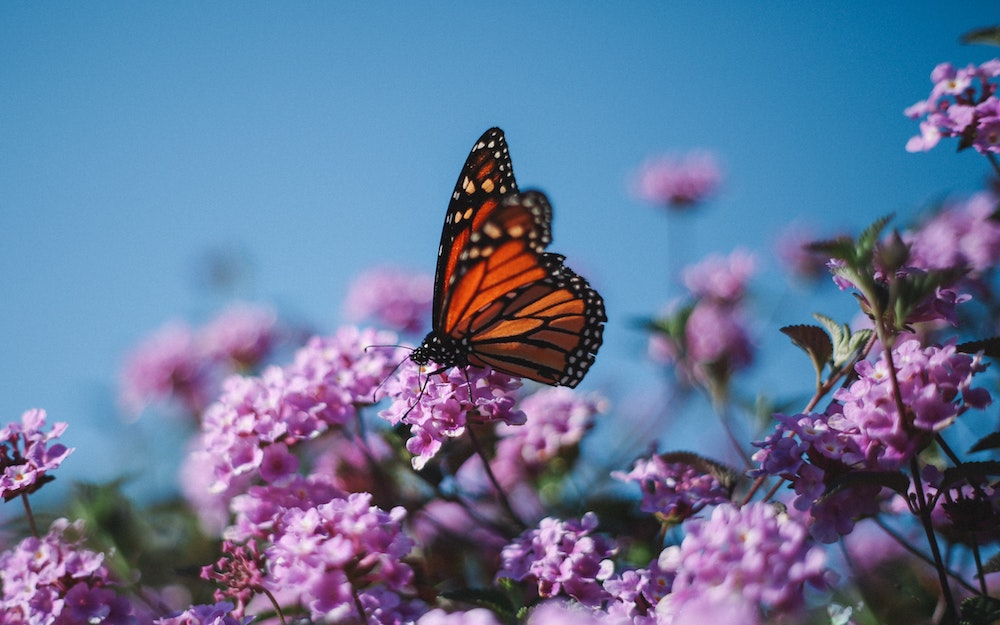The Monarch butterfly (Danaus plexippus) is a well-known North American butterfly. Its wings feature an easily recognizable orange and black pattern. The females have darker veins on their wings, and the males have a spot in the center of each hindwing from which pheromones are released.
Migration
Monarchs are especially noted for their lengthy annual migration. They make massive southward migrations from August through October. A northward migration takes place in the spring. Female Monarchs deposit eggs for the next generation during these migrations. The population east of the Rocky Mountains overwinters in Michoac·n, Mexico, and the western population overwinters in various sites in central coastal California, United States, notably in Pacific Grove and Santa Cruz. The length of these journeys far exceeds the lifetime of a Monarch (lives four days as egg, two weeks as caterpillar, ten days as chrysalis, and two to six weeks as a butterfly). The last generation of the summer lives up to 7 months, during which it flies to the overwinter location. This generation does not reproduce until it leaves the overwinter location the following spring. How the species manages to return to the same overwintering spots over a gap of several generations is still a subject of research; the flight patterns are inherited, based on a combination of circadian rhythm and the position of the sun on the sky. A recent study suggests that butterflies have special ultraviolet photoreceptors that provide them with a sense of direction. This is one of the few insects to manage transatlantic crossings. A few Monarchs turn up in the far southwest of Great Britain in years when the wind conditions are right. Monarchs can also be found in New Zealand during summer, but are absent the rest of the year.
On the island of Hawaii no migrations have been noted. Monarchs will live a life of six to eight weeks in a garden having their host asclepias plants and sufficient flowers for nectar. This is especially true if the flower garden happens to be surrounded by native forest that seems to be lacking in flowers.

Leave a Reply